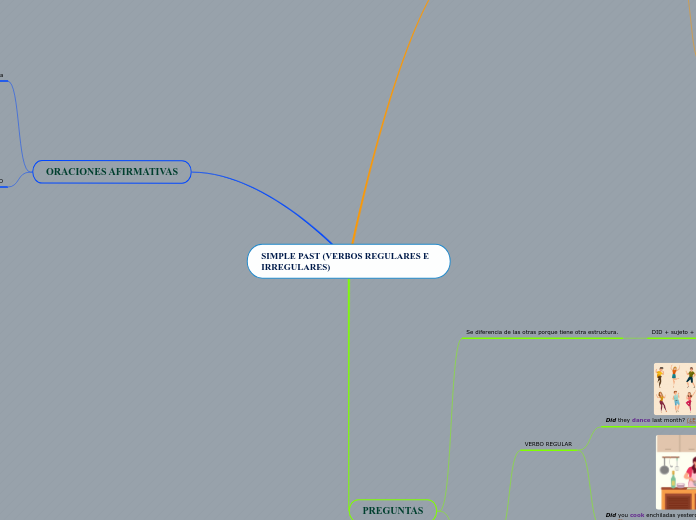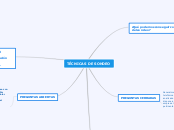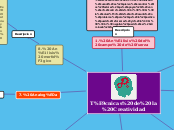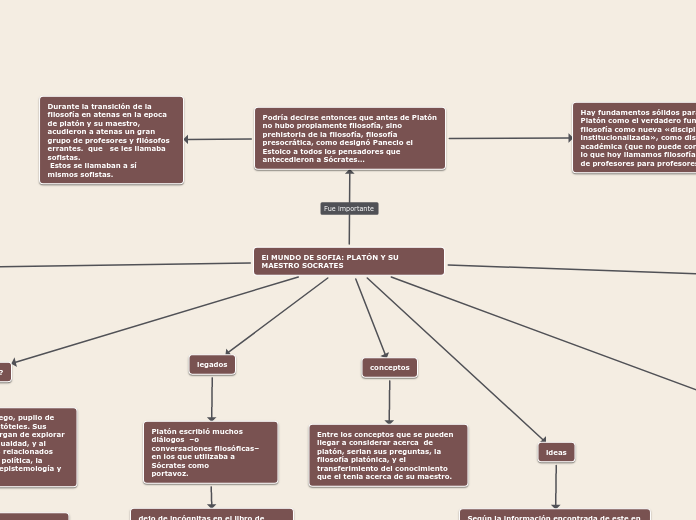SIMPLE PAST (VERBOS REGULARES E IRREGULARES)
ORACIONES AFIRMATIVAS
We drank water. (Nosotros bebimos agua)
She lived in Francia. (Ella vivió en Francia).
Sigue esta estructura
sujeto+verbo en pasado+complemento
PREGUNTAS
Did she lend a book yesterday? (¿Le prestó un libro ayer?)
RESPUESTA: No, she didn’t lend a book yesterday. (No, ayer no prestó un libro.)
Did you send me a message? (¿Me enviaste un mensaje?)
RESPUESTA: No, I didn’t. (No, no lo hice).
Did you cook enchiladas yesterday? (¿Cocinaste enchiladas ayer?)
Cuando la respuesta es larga el verbo se tiene que escribir en pasado.
Yes, I cooked enchiladas yesterday. (Si, cocine enchiladas ayer)
Did they dance last month? (¿Ellas bailaron el mes pasado?)
RESPUESTA: Yes, they did. (Si, lo hicieron).
Se diferencia de las otras porque tiene otra estructura.
DID + sujeto + infinitivo
Para responder no, es: No+sujeto+DIDN´T
Para responder si, es : Yes+sujeto+DID
ORACIONES NEGATIVAS
EJEMPLO
VERBO IRREGULAR
I didn’t read much last month. (No leí mucho el mes pasado)
They didn’t buy the food. (Ellos no compraron la comida)
VERBO REGULAR
I didn’t study for my English class. (No estudie para mi clase de inglés)
He didn’t answer all the questions. (No respondió a todas las preguntas)
Tiene esta estructura
Sujeto + DIDN’T + infinitivo









